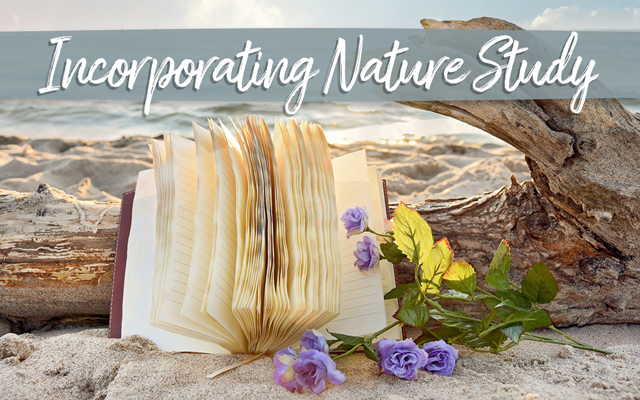Incorporating Nature Study

Share this post:

If you’re like me, nature study can be something that sounds great but never seems to happen. However, I find that if anything, we have to be intentional about making it happen. Today, I’m sharing some ideas to help you get ready for spring and the beauty that it brings.
1-Journal: Have your students start a nature journal. Take a walk around your neighborhood, local park, or even your yard; and have your kids draw what they see in a certain location. Do this while things are still in winter mode. Then go back when things are starting to bud and draw the same area. Do the same with full summer, fall, and early winter. This will give your student a snapshot of the circle of life in that little area.
2-Garden: If you have a yard, give your kids a little corner to plant flowers or a small vegetable garden. Spring is a good time to plant lettuces and salad greens as they do well in cooler weather, and you can get a harvest pretty early. Once the greens are gone and the fear of frost is gone, plant tomatoes, beets, and beans. This will give you an opportunity to study different plant structures and root types. Even if you live in an apartment, you can start a container garden on your patio or windowsill.
3-Walk: Get out and take a daily walk with your family. Mornings and early evenings are typically cooler and you can get the benefit of sunrise/sunset masterpieces painted in the sky.
4-Field Trips: If you have a local garden center or nursery, botanical garden, or an arboretum nearby, take a trip and peruse the various vegetables and flowers with your children. Take note of different types of tree bark, leaves, and flowers.
5-Compost: This may not work for apartment living, but if you have a yard you can start a compost pile with your fruit and vegetable scraps. You can simply use a plastic tote or trash can with a lid. Poke holes in the bottom to allow for drainage, and then add a little dirt, earthworms and vegetable scraps. Add water to moisten the dirt (and speed the composting process). Turn your compost as needed and then use this new nutrient rich dirt to feed your flower beds and vegetable gardens.
Enjoy the sights and sounds of spring, and do it on purpose!
Joesette Huffman is a dynamic speaker, blogger, wife and homeschooling mother of two. She is is active both in the online homeschooling world and in her local homeschool community and church, as well as a volleyball coach and co-op leader. You can find her weekly at Learning Curve.












































